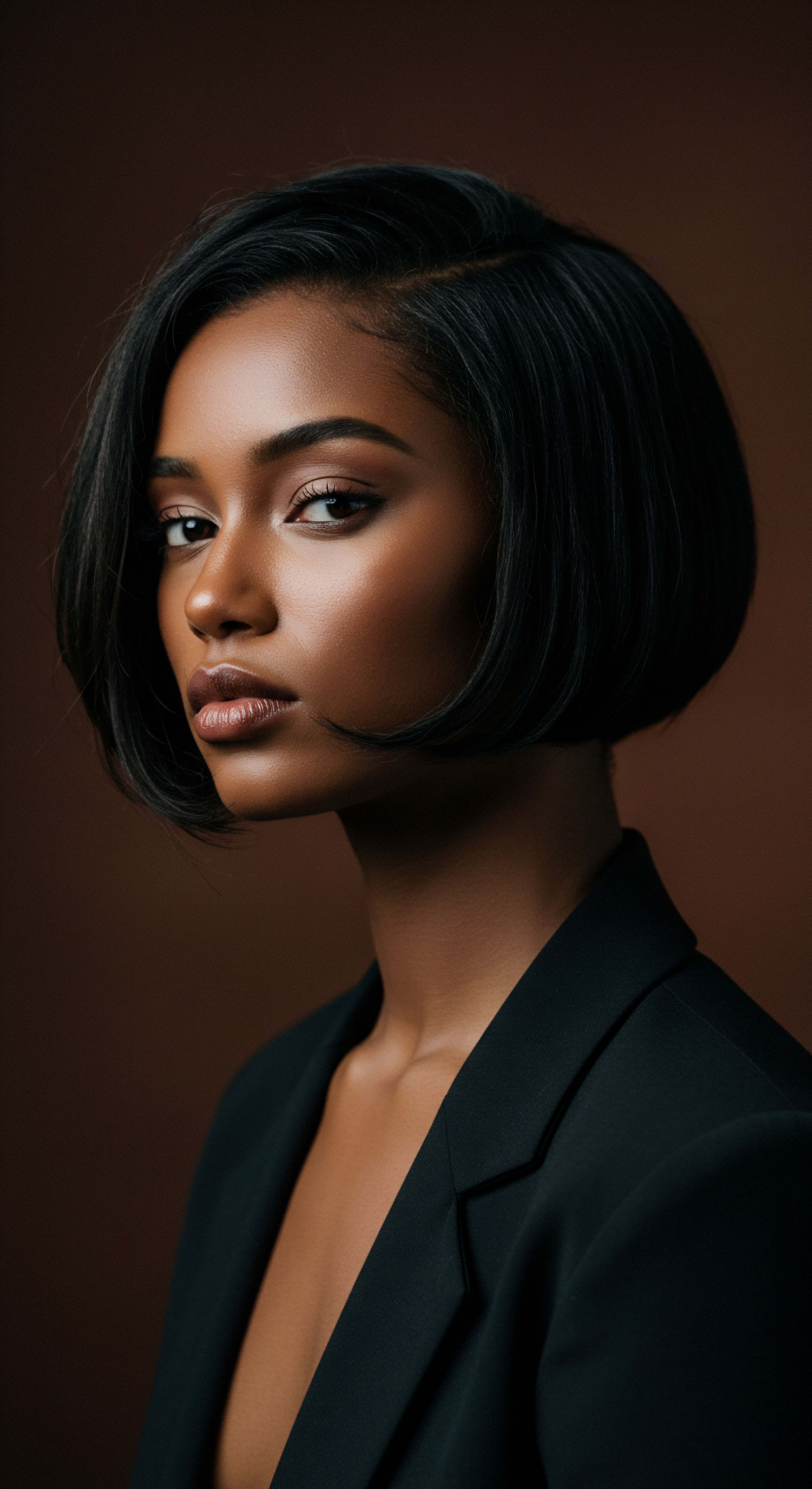
Roots
The very ground beneath our hair, the scalp, quietly performs a delicate dance of biological processes, often unnoticed until a whisper of imbalance arises. It stands as a vital extension of our skin, a protective shield and a nurturing bed for each strand. For those with textured hair, this relationship holds particular significance, as the inherent characteristics of curls and coils often mean a drier scalp, necessitating a thoughtful approach to care. Understanding the elemental workings of this intricate landscape reveals how readily external applications, specifically hair product ingredients, might influence its natural rhythm.
At its core, the scalp maintains a slightly acidic environment, a pH ranging from approximately 4.5 to 5.5. This subtle acidity, often termed the acid mantle, forms a protective barrier, a first line of defense against the proliferation of unwelcome microorganisms and environmental aggressors. This natural pH also plays a role in keeping the hair’s cuticle layer, the outermost protective scales, smoothly closed, preserving moisture and contributing to a healthy appearance. Disruptions to this acidic state, whether by overly alkaline products or harsh cleansing agents, can leave the scalp vulnerable, compromising its protective functions and setting the stage for discomfort.
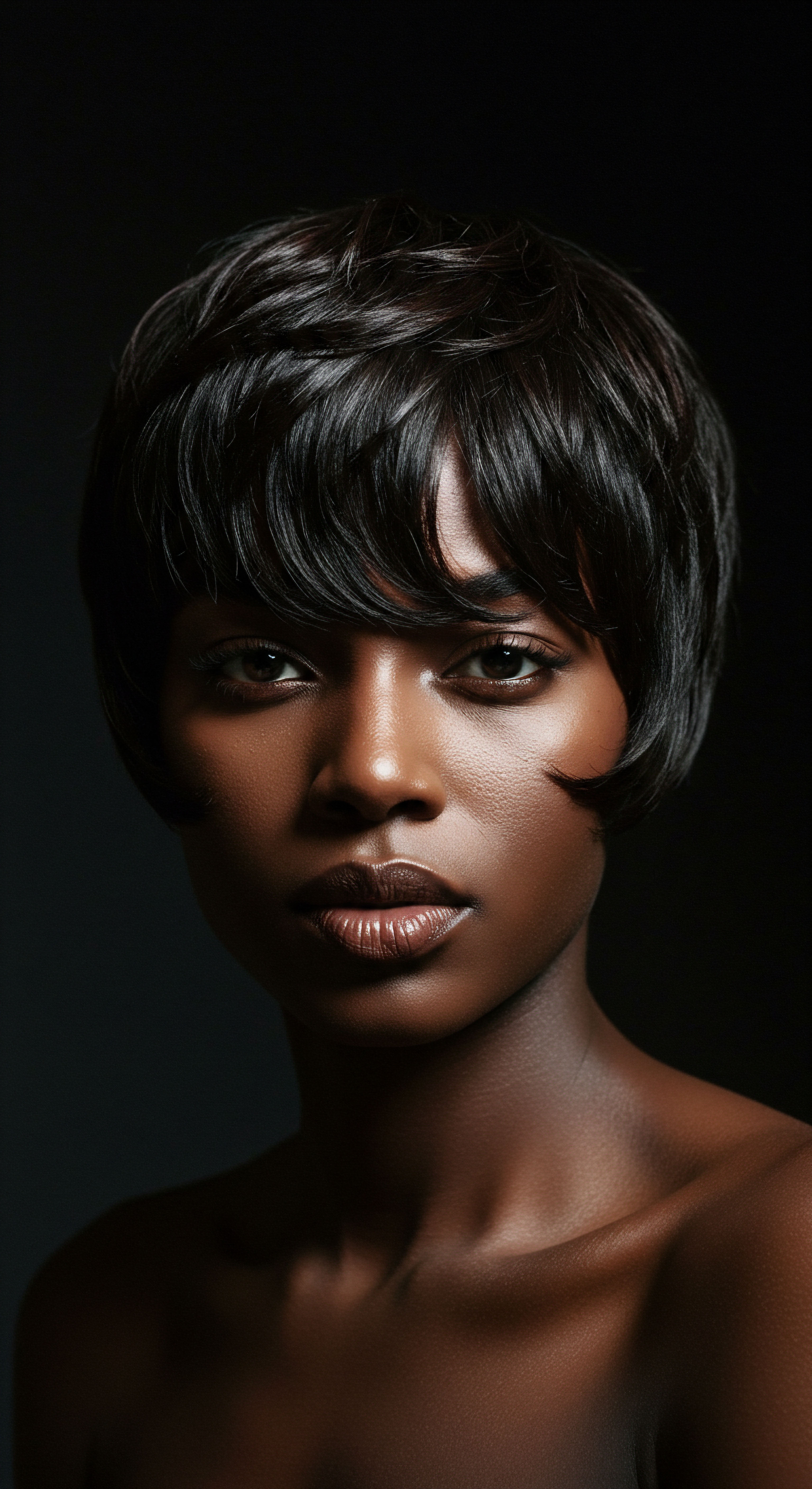
The Scalp’s Living Surface
Beyond pH, the scalp is a thriving ecosystem, home to a diverse community of microorganisms known as the scalp microbiome. This intricate balance of bacteria and fungi, while invisible to the eye, plays a significant role in scalp health. Beneficial microbes contribute to the breakdown of sebum, the scalp’s natural oil, releasing essential nutrients that support hair follicles and growth. They also help maintain the right balance of sebum production, preventing both excessive oiliness and uncomfortable dryness.
When this microbial harmony is disturbed, an overgrowth of certain species can occur, leading to conditions like dandruff or irritation. Products with strong antimicrobial properties, while sometimes necessary for specific concerns, can inadvertently reduce the diversity of this microbial community, weakening its protective functions. It is a subtle interplay, one where even seemingly benign ingredients can alter the microscopic world residing on our heads.
The scalp, a vital extension of our skin, maintains a delicate acidic balance and hosts a thriving microbiome, both essential for healthy hair.

Hair’s Anchor and Its Foundation
Each hair strand emerges from a follicle embedded within the scalp, drawing its sustenance from this foundational environment. The condition of the scalp directly impacts the health, strength, and appearance of the hair. A compromised scalp barrier, whether due to irritation, dryness, or an altered pH, can lead to issues that extend beyond mere discomfort, potentially affecting hair growth cycles and contributing to fragility.
The skin barrier itself, a complex structure of lipids and proteins, acts as a gatekeeper, regulating what enters and exits the scalp. When certain ingredients interact with this barrier, they can either fortify its integrity or, conversely, strip away its protective components, increasing transepidermal water loss (TEWL) and leaving the scalp exposed. This fundamental understanding of the scalp’s biology lays the groundwork for discerning how the myriad of hair product ingredients might indeed, with subtle persistence, disrupt its inherent equilibrium.

Ritual
Our daily and weekly hair rituals, from the gentle lather of a shampoo to the nourishing application of a conditioner, are more than mere routines; they are acts of personal care, often steeped in tradition and personal preference. For those with textured hair, these practices frequently carry cultural weight, passed down through generations, shaping not only how hair is cared for but also how it is perceived. Within these cherished customs, the selection of hair products becomes a silent yet powerful decision, capable of either supporting or subtly challenging the scalp’s inherent balance.
Consider the common act of cleansing. Many shampoos contain surfactants, agents designed to lift dirt and oil from the hair and scalp. Among these, Sulfates, particularly sodium lauryl sulfate (SLS) and sodium laureth sulfate (SLES), are known for their ability to create a rich lather and effectively cleanse. However, their efficacy in stripping away impurities can also extend to the scalp’s natural oils, which are vital for maintaining its protective barrier and moisture.
For textured hair, which tends to be naturally drier, this stripping action can exacerbate dryness, leading to irritation, itching, and a feeling of tightness. While not universally problematic, for sensitive scalps or those with pre-existing conditions, sulfates can indeed disrupt the delicate equilibrium.
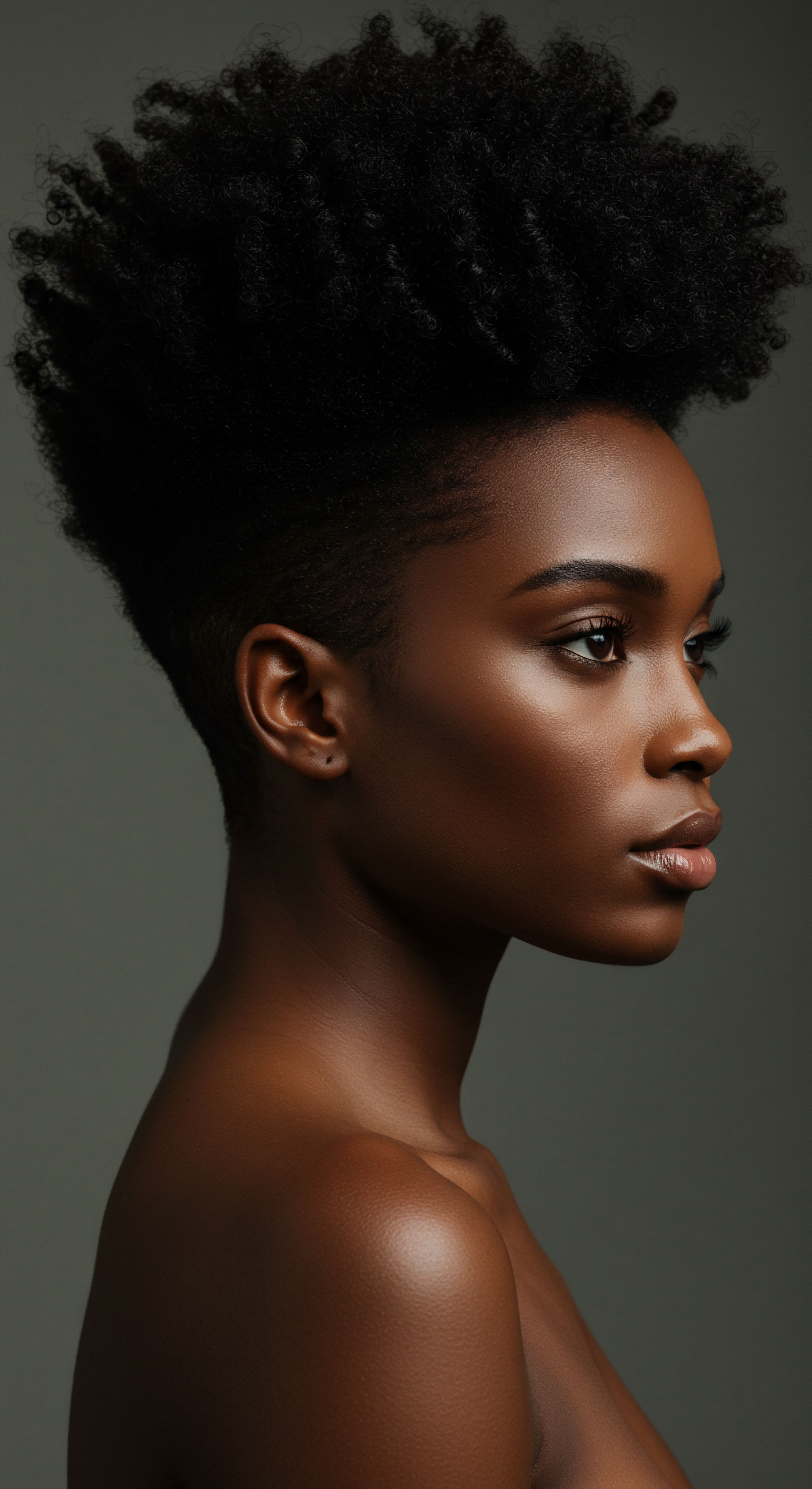
Can Daily Cleansing Practices Alter Scalp Harmony?
The frequency of washing also plays a role. Over-washing can strip away natural oils and beneficial microbes, leaving the scalp vulnerable. Conversely, infrequent washing may allow for the overgrowth of certain microbial species and the accumulation of product residue, sweat, and dead skin cells, creating a barrier that impedes the healthy functioning of the scalp microbiome. Finding a balanced cleansing rhythm, tailored to individual scalp needs and hair type, becomes a personal quest.
Hair care routines, especially cleansing, can influence scalp health, with strong surfactants potentially stripping vital natural oils.
Beyond cleansing, the application of conditioners and styling products introduces a host of other ingredients. Silicones, for instance, are widely used for their ability to impart a smooth, shiny finish and reduce frizz. While they offer immediate aesthetic benefits, non-water-soluble silicones can create a film on the hair and scalp, potentially leading to buildup over time.
This accumulation can trap dirt and oils, clog follicles, and prevent moisture from penetrating the hair shaft, contributing to dryness, dullness, and even irritation or itching. Some argue that this coating can also affect the scalp’s microbiome balance.
| Ingredient Class Sulfates |
| Primary Function Cleansing, Lathering |
| Potential Scalp Impact Stripping natural oils, dryness, irritation, itching |
| Ingredient Class Silicones (non-water soluble) |
| Primary Function Smoothing, Shine, Frizz control |
| Potential Scalp Impact Product buildup, clogged follicles, dryness, irritation |
| Ingredient Class Parabens |
| Primary Function Preservatives |
| Potential Scalp Impact Scalp irritation, dryness, potential hormone disruption |
| Ingredient Class Fragrances |
| Primary Function Scent |
| Potential Scalp Impact Allergic reactions, irritation, sensitivity |
| Ingredient Class Drying Alcohols |
| Primary Function Quick drying, light hold |
| Potential Scalp Impact Stripping moisture, dryness, irritation |
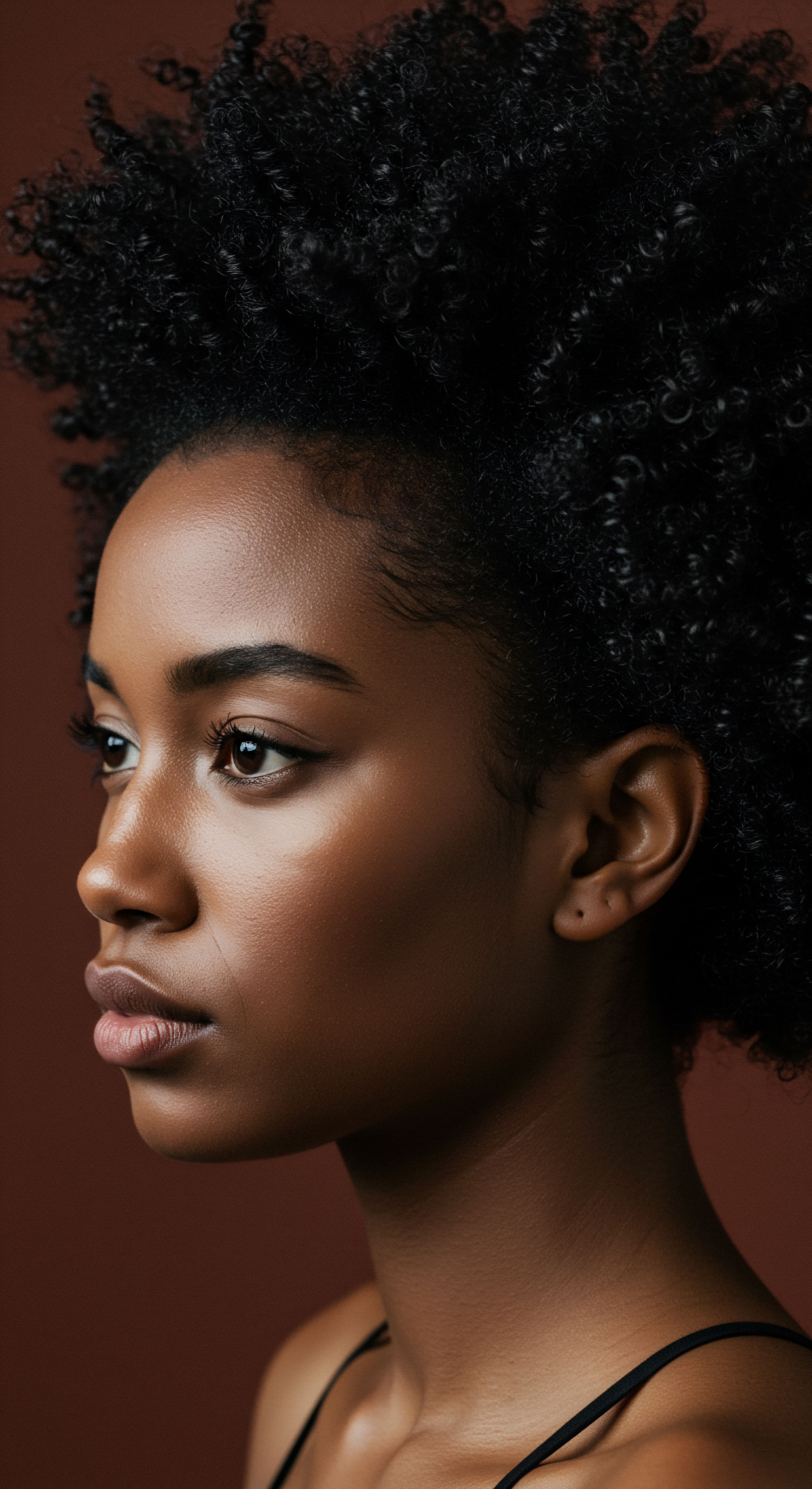
Are Preservatives and Fragrances Silent Instigators?
Preservatives, like Parabens and isothiazolinones (e.g. methylchloroisothiazolinone, methylisothiazolinone), are included in products to prevent microbial growth and extend shelf life. While necessary for product stability, these ingredients are common culprits for allergic contact dermatitis and scalp irritation, particularly for sensitive individuals. Similarly, synthetic Fragrances, often listed simply as “fragrance” or “parfum,” represent a complex blend of chemicals, many of which are known allergens and irritants for the scalp.
A study found that fragrances were identified as the most common allergens (5.2% of tested individuals) in patch test studies related to hair spray components. The decision to use fragrance-free products can be a significant step for those experiencing unexplained scalp sensitivity.
Understanding these ingredient interactions within the context of our hair care rituals empowers us to make more informed choices, moving towards practices that honor the scalp’s inherent need for equilibrium.
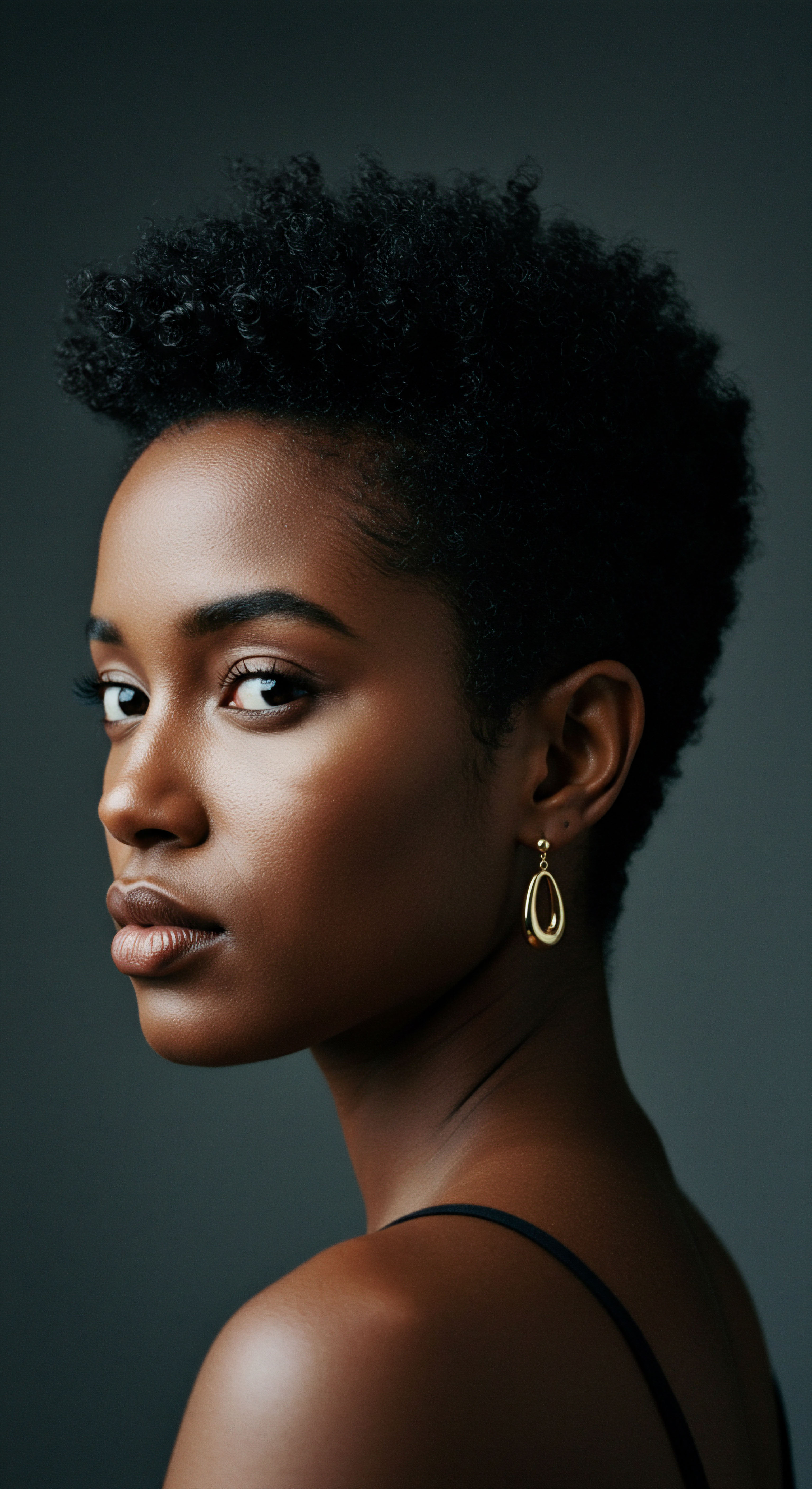
Relay
Moving beyond the immediate sensation of product use, a deeper inquiry into the scalp’s intricate biological systems reveals a more profound interconnectedness, one where external applications meet internal predispositions and cultural narratives. The question of whether hair product ingredients disrupt the scalp’s natural balance expands into a complex interplay of genetic factors, environmental stressors, and the historical evolution of beauty practices, particularly pertinent for those navigating the nuances of textured hair.
The scalp’s barrier function, its ability to protect against external assaults and regulate hydration, stands as a central pillar of its health. Research utilizing transepidermal water loss (TEWL) measurements offers a window into this protective capacity. One study demonstrated that repeated exposure to hair sprays with high Alcohol Content led to a significant increase in TEWL after two weeks of daily use, indicating a temporary disruption of the skin barrier.
This impairment allows irritants and allergens greater access to deeper layers of the scalp, potentially escalating sensitivity and inflammatory responses. The concept of a compromised barrier resonates deeply for textured hair, which often contends with inherent dryness, making it more susceptible to such disruptions.

Does the Scalp Microbiome Truly Shift with Product Use?
The delicate ecosystem of the scalp microbiome, a dynamic community of bacteria and fungi, continuously interacts with its environment, including the products we apply. While some ingredients can certainly alter this microbial landscape, some studies present intriguing findings. A longitudinal study investigating the effect of topical application of Coconut Oil on the scalp microbiome in a cohort of 140 Indian women (both healthy and with dandruff) observed an enrichment of healthy scalp-related bacterial pathways, such as biotin metabolism, and a decrease in fungal pathogenesis pathways following coconut oil treatment.
This suggests that certain traditional ingredients, when applied consistently, may contribute to a more balanced and beneficial microbial environment, offering a counterpoint to the notion that all external applications are disruptive. This particular study, spanning 16 weeks, provides a unique data point, hinting at the potential for certain natural elements to support, rather than hinder, the scalp’s microbial equilibrium.
- PH Balance ❉ The scalp’s optimal pH, around 4.5 to 5.5, helps maintain the acid mantle, which discourages harmful microbial growth and keeps hair cuticles sealed.
- Surfactants ❉ While cleansing, strong surfactants like sulfates can strip natural oils, raising scalp pH and leaving it vulnerable.
- Preservatives ❉ Chemicals like parabens and isothiazolinones, though preventing spoilage, are known irritants and allergens that can provoke scalp sensitivity.
- Silicones ❉ Certain types can accumulate, forming a barrier that traps moisture and dirt, potentially disrupting the scalp’s natural processes and leading to irritation.
- Fragrances ❉ Often undisclosed mixtures, they are frequent causes of allergic reactions and irritation on the scalp.

How Do Cultural Hair Practices Intersect with Ingredient Impact?
Cultural hair practices, deeply embedded in identity and heritage, also intersect with the effects of product ingredients. For textured hair, practices such as protective styling, oiling, and specific cleansing routines have evolved over centuries, often with an intuitive understanding of hair and scalp needs. However, the modernization of these practices sometimes introduces products with ingredients that conflict with traditional methods or the hair’s inherent structure.
For instance, a study found that among African American girls, certain hair care practices, including the use of chemical relaxers and infrequent washing, were associated with scalp conditions like traction alopecia and seborrheic dermatitis. While the study did not directly isolate ingredient impact, it points to a broader pattern where traditional hair care, when altered by modern chemical treatments, can lead to adverse scalp reactions.
This is not to say that all traditional practices are inherently beneficial, nor that all modern products are harmful. Rather, it underscores the importance of a nuanced perspective, recognizing that the scalp’s response is a sum of its genetic predispositions, environmental exposures, and the cumulative effect of applied products and practices. A study in Brazil noted that Black women often prioritize straightening despite knowing the risks, driven by workplace beauty standards. This highlights a social dimension to product choice, where cultural pressures can lead to the continued use of potentially disruptive ingredients.
Scalp health is a complex interplay of genetics, environment, and product ingredients, with traditional practices offering unique insights.
| Condition Contact Dermatitis |
| Associated Ingredients/Practices Fragrances, Preservatives, Dyes, Overloading leave-in products |
| Reported Symptoms Itching, flaking, redness, eczematous rash |
| Condition Dryness/Irritation |
| Associated Ingredients/Practices Sulfates, Drying alcohols, Parabens, Silicones |
| Reported Symptoms Itching, tightness, flaking, redness |
| Condition Product Buildup |
| Associated Ingredients/Practices Non-water soluble silicones, Infrequent washing |
| Reported Symptoms Dullness, limp hair, clogged follicles, potential irritation |
| Condition Microbiome Imbalance |
| Associated Ingredients/Practices Over-washing, Antimicrobial products, Silicone buildup |
| Reported Symptoms Dandruff, itchiness, oily hair |

What Scientific Insights Guide a Balanced Approach to Scalp Care?
The scientific understanding of scalp health continues to advance, revealing the interconnectedness of its various components. For instance, the skin barrier’s integrity is closely tied to the composition of its lipids. Ingredients that replenish lost lipids, such as ceramides and fatty acids, can help fortify the barrier, reducing transepidermal water loss and supporting a balanced environment. Antioxidant therapies, with ingredients like niacinamide and panthenol, also mitigate oxidative stress, which can damage the scalp barrier.
The prevalence of sensitive scalp varies widely in studies, from 25% to 70% in the general population, with a higher frequency reported in women. While various factors contribute, the use of hair products containing irritants is frequently cited. This highlights the individual variability in scalp response, underscoring that what works for one person may not suit another. The journey towards scalp balance becomes one of attentive observation and informed selection, respecting both the science of the scalp and the deeply personal nature of hair care.

Reflection
The dialogue surrounding hair product ingredients and their influence on the scalp’s natural balance is a rich, ongoing conversation, far from a simple declaration. It is a dialogue that invites us to pause, to observe our own unique scalp responses, and to listen to the quiet wisdom that arises from centuries of diverse hair traditions. We find ourselves at a fascinating juncture, where scientific understanding illuminates the microscopic intricacies of our scalp’s ecosystem, while cultural narratives remind us of hair’s profound connection to identity and well-being. There is a gentle invitation here to move beyond fleeting trends and toward a deeper, more attuned relationship with our hair and scalp, recognizing that true vibrancy blossoms from a foundation of informed care and respectful consideration.

References
- Saxena, R. Mittal, P. Clavaud, C. et al. Longitudinal study of the scalp microbiome suggests coconut oil to enrich healthy scalp commensals. Scientific Reports, 2021.
- Misery, L. Sibaud, V. Hernandez, J. et al. Sensitive scalp ❉ Epidemiology and clinical characteristics. Acta Dermato-Venereologica, 2008.
- Draelos, Z. D. Hair Care ❉ An Illustrated Dermatologic Problem-Solving Approach. CRC Press, 2011.
- Giacomoni, P. U. & Maibach, H. I. Handbook of Cosmetic Science and Technology. CRC Press, 2005.
- Robins, C. R. The Science of Hair Care. CRC Press, 2012.
- Dias, M. F. R. G. Hair Cosmetics ❉ An Overview. International Journal of Trichology, 2015.
- Gavazzoni Dias, M. F. R. Hair Cosmetics and Cosmeceuticals. Cosmetics, 2020.
- Schueller, R. & Romanowski, P. Conditioning Agents for Hair and Skin. CRC Press, 2011.
- Anand, V. A. The Chemistry of Hair Care. Allured Publishing Corporation, 2002.
- Hashimoto, K. & Sano, T. Hair and Scalp Disorders ❉ A Clinical and Scientific Approach. Springer, 2000.